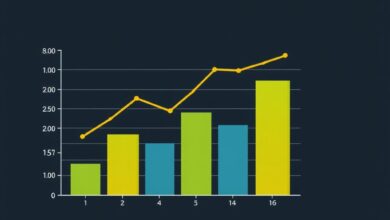How to build an emergency fund and why it matters

Establish a dedicated savings account with an initial goal of setting aside three to six months’ worth of living expenses. This proactive step protects against the unpredictability of life, ensuring that you’re prepared for unexpected expenses such as medical emergencies or job loss.
Having this financial cushion not only provides peace of mind but also enhances your overall security. It mitigates the risk associated with unforeseen circumstances, allowing you to navigate challenges without resorting to high-interest debt or drastic lifestyle changes.
To grow your savings efficiently, consider automating contributions from your paycheck or bank account. This method fosters consistent saving habits and gradually builds your safety net without the need for constant monitoring.
Remember, every small deposit counts; even modest amounts can accumulate significantly over time. Prioritize this practice to safeguard your financial future and ensure resilience in times of crisis.
Determine Your Savings Goal
Set a specific target for your savings that covers at least three to six months of living expenses. This amount will provide a buffer against unforeseen costs.
To calculate your savings goal, assess your monthly expenditures. Include essential bills like rent, utilities, groceries, and transportation. Use the table below to organize your budget:
Your goal should reflect the total above multiplied by the desired number of months. For example, if your total monthly expenses are $3,000 and you aim for six months of coverage, your target becomes $18,000.
This strategy not only fortifies financial security but also allows you to manage unexpected expenses without disrupting long-term plans. Regularly review and adjust this figure as your circumstances evolve to ensure ongoing adequacy in savings.
Select a Suitable Account
Choose a high-yield savings account to maximize your returns while keeping your cash liquid. Look for accounts that offer competitive interest rates, typically above the national average, and no monthly fees. This ensures that your savings grow effectively without unnecessary deductions.
Consider online banks, as they often provide better rates than traditional brick-and-mortar institutions due to lower overhead costs. Ensure the bank is FDIC insured to protect against risks of losing your deposits.
Evaluate the accessibility of funds; you want an account that allows easy transfers without penalties. A good option includes accounts with no withdrawal limits, enabling quick access during unforeseen financial events.
Finally, keep an eye on any minimum balance requirements. Accounts with higher thresholds can limit flexibility in managing unexpected expenses. Aim for options that allow you to maintain a comfortable balance while still benefiting from interest accumulation.
Establish a Monthly Contribution
Set a consistent monthly amount to allocate towards your savings. This practice fortifies your financial security and prepares you for unforeseen costs.
- Assess Your Budget: Review your monthly income and expenses. Identify areas where you can reduce spending to free up cash for savings.
- Choose a Specific Amount: Aim for a target that is realistic yet challenging. Consider starting with at least 10% of your income, adjusting as necessary based on your financial situation.
- Automate Your Contributions: Set up automatic transfers from your checking account to your savings account. This minimizes temptation to spend the money elsewhere.
Consistent contributions cultivate a robust safety net, ensuring you’re equipped to handle unexpected expenses without derailing your overall financial health.
- Review Regularly: Reassess your contributions every few months. Increase the amount as your financial position improves or when you receive additional income.
- Create Milestones: Establish short-term goals that can motivate you along the way. Celebrate reaching these milestones to maintain enthusiasm in saving.
This structured approach not only enhances your financial stability but also instills disciplined saving habits that benefit long-term prosperity.
Track Your Progress Regularly
Regularly monitoring your savings is crucial for maintaining financial security. Set specific intervals–monthly or quarterly–to review your progress towards the savings target you established. This practice allows you to assess how well you’re managing unexpected expenses and whether your contributions are aligned with your goals.
Utilize tools like budgeting apps or spreadsheets to record your contributions and track interest earned. Visual representations, such as graphs, can provide insight into your growth over time, making it easier to identify trends or areas needing adjustment.
If you notice that you’re falling short of your goal, reassess your monthly contributions or explore ways to increase income. Conversely, if you exceed expectations, consider reallocating excess savings towards higher yield options to mitigate risk while enhancing potential returns.
By staying proactive in tracking, you not only secure peace of mind but also ensure that you’re well-prepared for any financial hurdles life may throw your way.
Adjust Fund as Needed
Regularly evaluate your savings to align with changes in your life. Factors such as job loss, medical emergencies, or significant expenses can alter the required amount for financial security. If your living costs increase or you face new risks, recalibrating the total is crucial.
Consider increasing contributions if you’ve recently had a change in income or responsibilities. A good benchmark is to aim for three to six months’ worth of living expenses; however, this may need adjustments based on lifestyle changes or economic conditions.
Utilize financial tools and apps that help track expenditures and savings growth. This data allows for informed decisions about potential adjustments. Be proactive–if you notice rising costs or decreased income, enhance your contribution promptly.
Lastly, maintain a flexible mindset. The objective is not just to accumulate savings but also to ensure that they effectively mitigate risks while providing peace of mind regarding future financial challenges.






